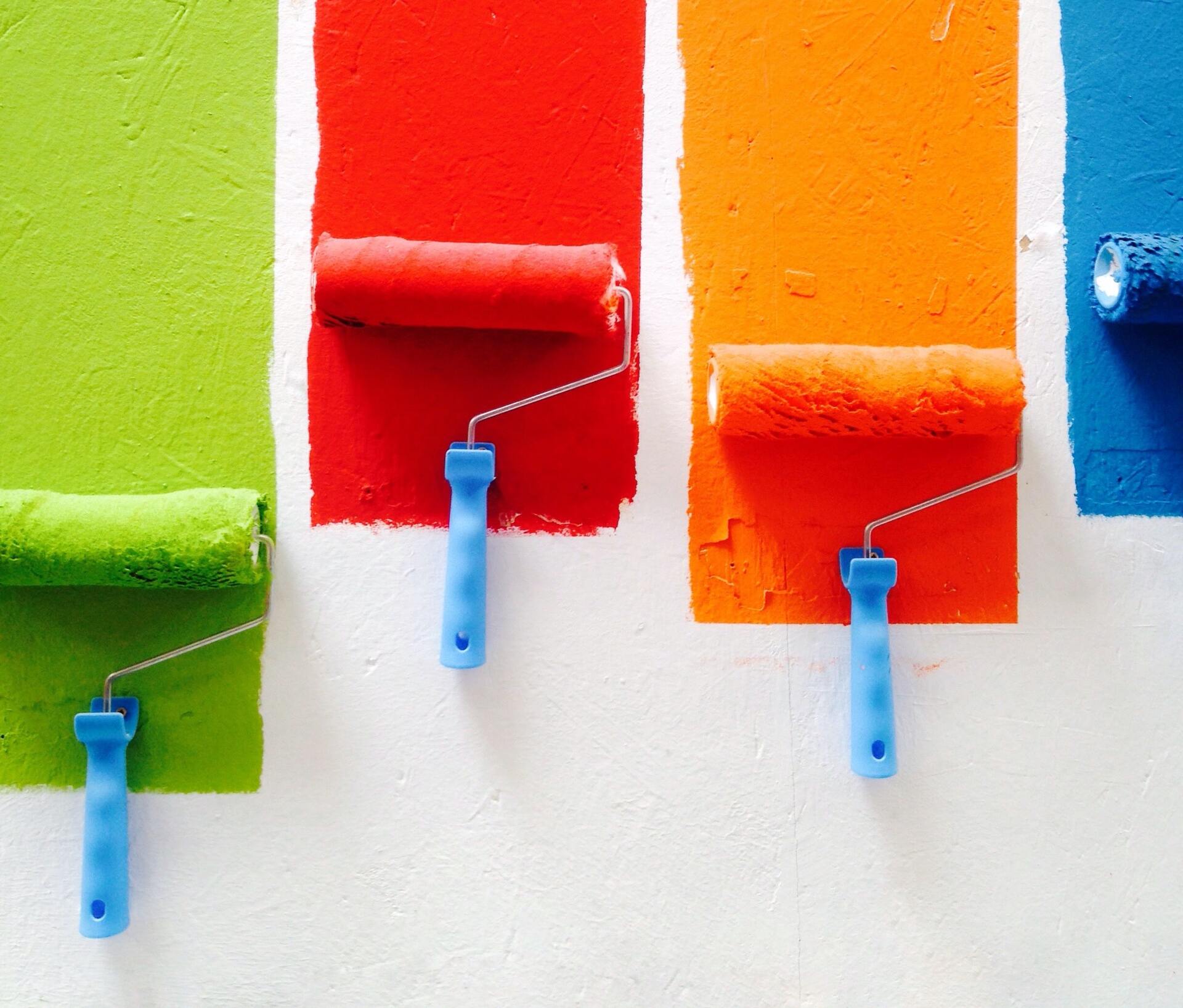
FAQ About Fundamentals of Design

What are some of the basic elements that make up every composition?
Some basic elements include line, shape, form, texture, and balance. Together, they're part of everything we see and create.
1- Line: A line is a simple shape that connects two or more points together. It can vary in weight, color, texture, and style. Every possibility gives a different feel to a line; whether it is wavy or thin or straight, it implies something different. Those qualities can have an impact on how your design is perceived. Lines appear in illustrations, drawings, and graphic elements like patterns. A line can add emphasis on an element, divide or organize content, and guide the viewer's eye.
2- Shape: A shape is a two-dimensional area with a boundary that is created by different forms of lines. Shapes can be geometric or organic (where the angles are random). Shapes help you organize or separate content, create illustrations and patterns.
3- Form: A form is a 3D shape. A shape can imply that it is 3D using the principles of perspective, light, and shadow by creating an illusion.
4- Texture: Texture is the quality of any surface. The texture is used in 2D design to add depth to a flat design. Elements of design can appear smooth, rough, or hard. Textures can be used as backgrounds but be careful not to overwhelm your viewers.
5- Balance: Equal distribution of visual elements imply a balance. Balance can be affected by color, size, number, and negative space (see. Gestalt Principles). Evenly distribute the weight of the elements to create a sense of balance.

What is graphic design?
Graphic design is an ancient craft where roots go back to old cave paintings. Creating visual content to communicate messages by applying the fundamental rules of design and visual hierarchy is what graphic design is. The term originates in the 20's print industry; therefore, graphic designers traditionally focus on creating content for print media. Since user experience and user interface design have become a popular form of communication and creation, graphic design has expanded into new territories.
Graphic design is the visual way of communicating by putting elements and placing them in exact places in order to achieve a specific communication.

What does a communication designer do? And how does it differ from what a graphic designer does?
A communication designer uses visual elements to deliver specific information to the viewer. It is more about forming a relationship with your audience and the visual. It is their job to strategically communicate the brand's messages to their target audience.
Communication design is a broader term and it refers to using graphic design elements to strategically deliver a message. Although the jobs look similar, the roles are different. A graphic designer might create the graphics using software, but it's the communication designer's tole to choose the phrases/messages and mix them with the graphics to create a visual. They also need to have the skills to organize design elements to create an appealing design.

What is digital design?
Digital design mostly contains movement-related design areas such as animation, interactive landing pages, and modeling (2D or 3D). Therefore, it involves creating elements for any digital format including screens. The main difference between digital and graphic design is that graphic design is more static, traditionally focusing on print. But, they both create forms of communication.
As we stated above, interactivity is a key concept for digital design. The design must be usable and the users must interact with the designs in the right way.

What are UI principles?
1- The user is in control!
The users should have a sense of control over the screen. In that way, users can interact in a more comfortable way and learn quickly how things work.
To accomplish this, make the navigation easy. Provide visual clues so that users will know where they are and how they should continue to navigate. To have an enjoyable experience, the users should know that they can do mistakes and reverse their actions. So, the actions should be reversible by using the undo/redo options.
2- Less is more!
Get rid of things that are not necessary. Irrelevant elements or information are only there to confuse users. Also, the content can also be confusing. Do not use unfamiliar terminology and hard-to-understand buttons etc. Make your buttons big enough to interact easily and guide your users with constructive messages. Create an interface with a clean look.
3- Make things consistent!
Don't assign a different visual style to elements such as buttons, it is not the job of any user to wonder whether those elements have the same meaning or not. The same colors, fonts, and icons would create visual consistency. Don't reinvent the wheel, go with what users expect.
4- Don't make it too hard!
To make things clearer, add visual aids, tooltips, and details about the icons. Users will recognize the elements and have an easier experience. Use grouping in paragraphs rather than using an immense block of writing. Users process chunks of information easily and more quickly.

What is the difference between UI and UX?
UI design can be seen as the visual component of UX. Whereas UX refers to the experience that a user has with a product/website etc.

Is interaction design something different than UX?
Interaction Design (IxD) is highly confused with UX because they are both about the experience. IxD differentiates from UX in a way that it focuses on creating desired user experiences by creating both physical and emotional communication. Thus, IxD improves users' interactions and experiences. For UX, the experiences are just some stops along with the user flow.
It is impossible to think of IxD without UX. They go hand in hand to create enjoyable experiences.
